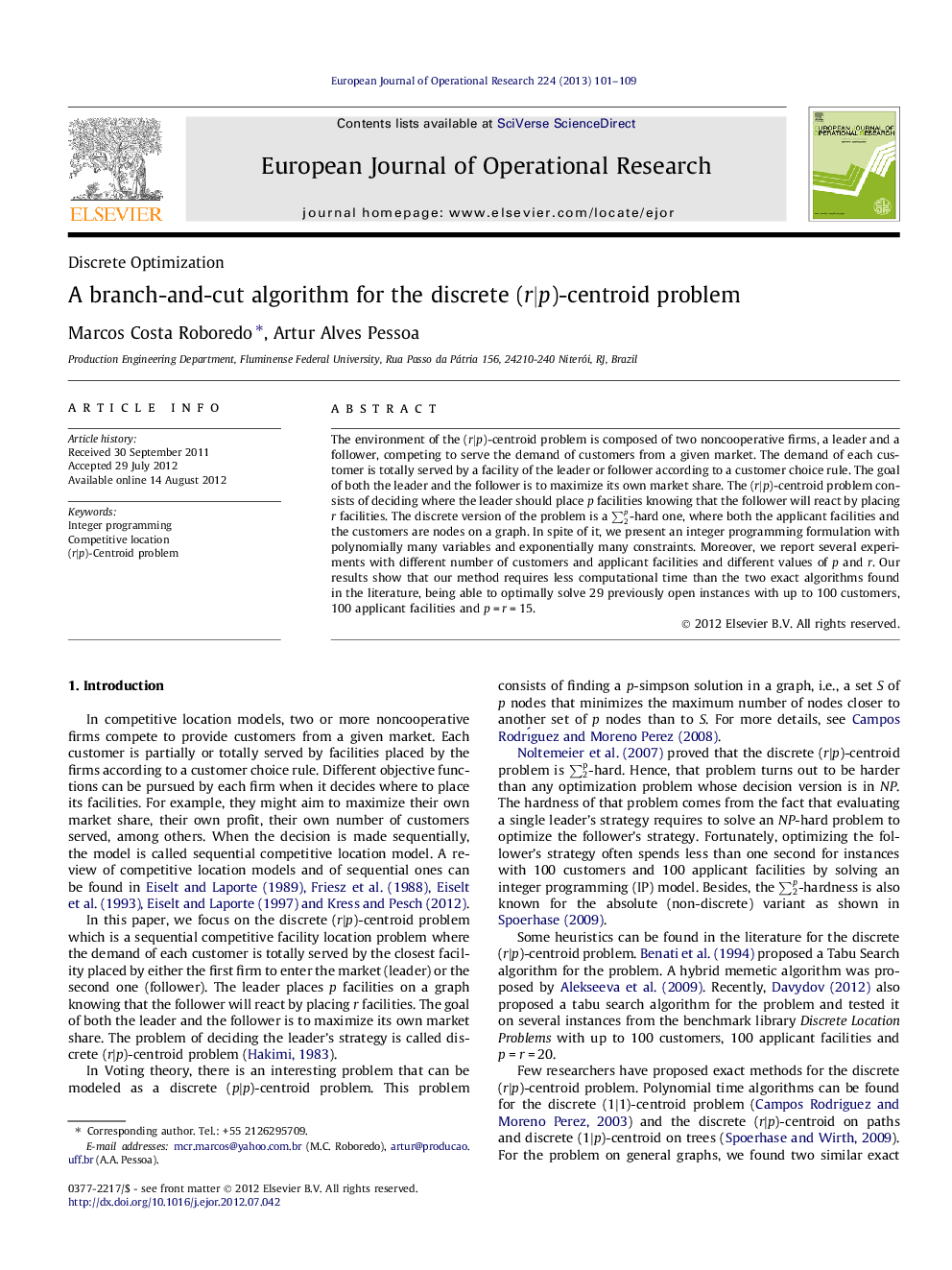| Article ID | Journal | Published Year | Pages | File Type |
|---|---|---|---|---|
| 476811 | European Journal of Operational Research | 2013 | 9 Pages |
The environment of the (r∣p)-centroid problem is composed of two noncooperative firms, a leader and a follower, competing to serve the demand of customers from a given market. The demand of each customer is totally served by a facility of the leader or follower according to a customer choice rule. The goal of both the leader and the follower is to maximize its own market share. The (r∣p)-centroid problem consists of deciding where the leader should place p facilities knowing that the follower will react by placing r facilities. The discrete version of the problem is a ∑2p-hard one, where both the applicant facilities and the customers are nodes on a graph. In spite of it, we present an integer programming formulation with polynomially many variables and exponentially many constraints. Moreover, we report several experiments with different number of customers and applicant facilities and different values of p and r. Our results show that our method requires less computational time than the two exact algorithms found in the literature, being able to optimally solve 29 previously open instances with up to 100 customers, 100 applicant facilities and p = r = 15.
► We present a branch-and-cut algorithm for the discrete (p∣r)-centroid problem. ► Our formulation has a polynomial number of variables. ► We define strengthened inequalities which improve the relaxation lower bound. ► Exhaustive experiments prove the efficiency and robustness of our method.
